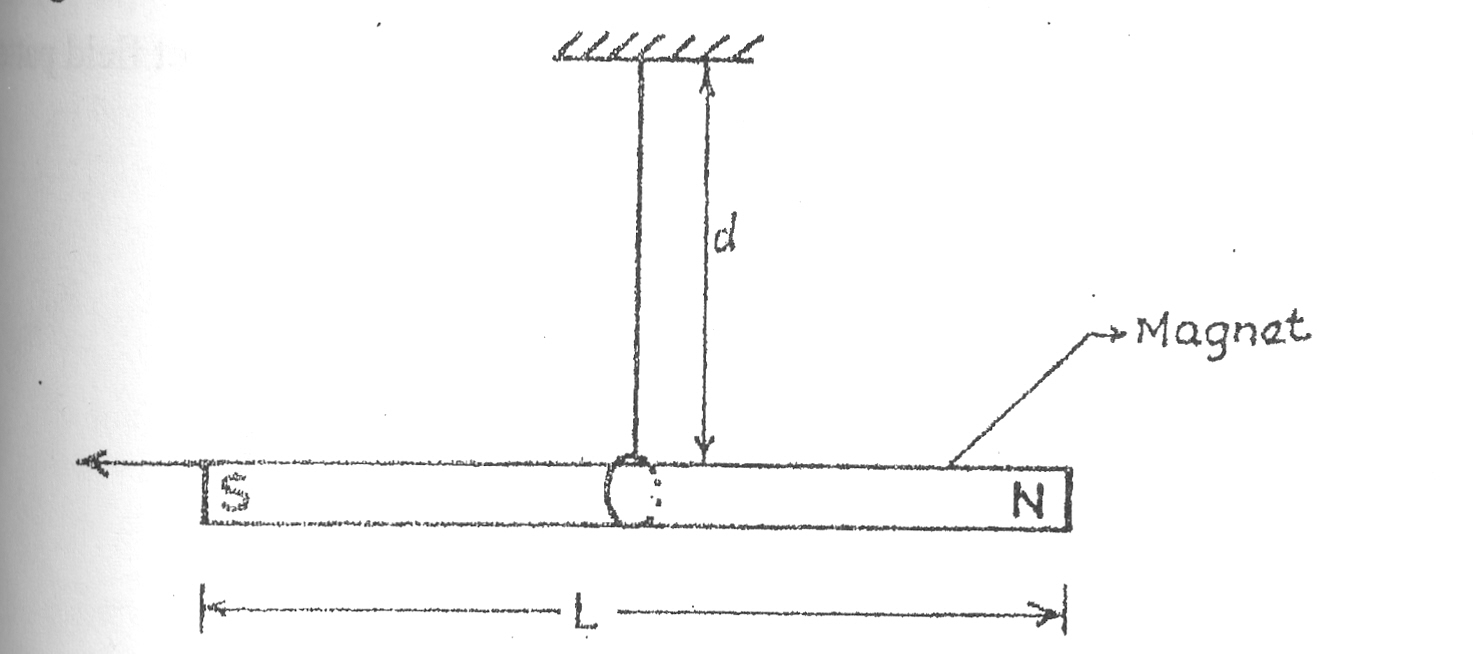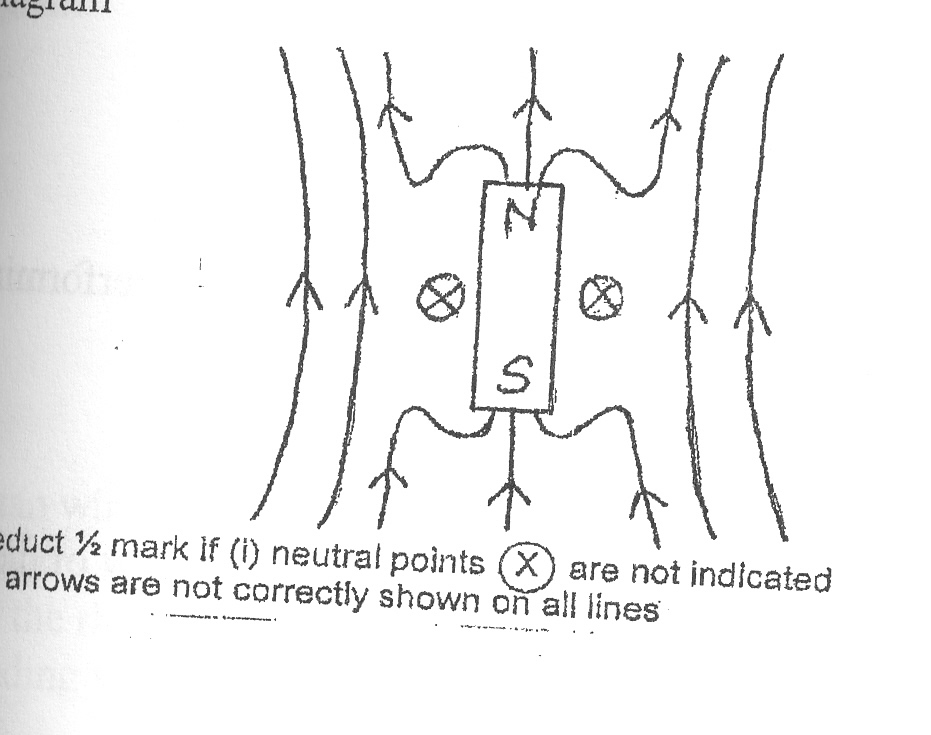|
|
Question 1
|
(a) Diagram

The diagram above illustrates a magnet of a length, L suspended by means of a light inextensible silk thread of length, d.
The bar of soft iron is momentarily brought near one end of the magnet to set the system oscillating with a small amplitude. The time, t, for 10 complete oscillations is taken and recorded.
The procedure is repeated for five other values of d.
Fig. 1(a) represents the length, L, of the magnet.
Fig. 1(b) represents the values of di.
Fig. 1(c) shows the corresponding values of ti where I = 1, 2, 3, 4, 5, and t.
- Measure and record the value of L.
- Measure and record the values of di.
- Read and record the times ti.
- Determine the period T and also evaluate d2, L2 and D = (di2– L2) in each case.
- Tabulate your readings.
- Plot a graph of T on the vertical axis against D on the horizontal axis.
- Determine the slope, s, of the graph.
- Determine the intercept, I, on the vertical axis.
- State two precautions that are necessary to ensure accurate results when performing this experiment.
(b) (i) Define magnetic angle of declination.
(ii) Draw the magnetic field pattern around a bar magnet placed in the earth’s magnetic field with its North pole pointing North.
|
| _____________________________________________________________________________________________________ |
|
This question was popular and fairly attempted by most candidates. Some of the candidates who attempted it wasted time measuring the length L more than once, some even did the measurement up to six times which was not necessary. Few candidates could not determine the period, T, of oscillation as they confuse it with time, t, whereas T = t/10. Most of the graph lines drawn by the candidates do not intercept the vertical axis as demanded by the question. Precautions stated were untenable such as “small angle of swing of magnet or table not shaking”
The (b) part was not well attempted. Most candidates failed to draw the correct field pattern and definition of magnetic angle of declination was poorly rendered.
The demands of part (a) include the following:
- measure and record the values of L, di and ti.
- determine the period T,
- evaluate six values of T1, d2 and D = (di2 – L2).
- tabulate their readings
- record the data in a composite table showing d, t, T, d2 and D
- plot six points correctly using reasonable scales on a distinguished axes.
- draw line of best fit through the plotted points.
(viii) determine the slope of the graph by drawing a large right angled triangle
(ix) state any two of the following precautions;
- rigid support ensured;
- parallax error avoided in using metre rule/stopwatch;
- note and correct for zero error of clock/rule;
- windows closed to avoid draught
- zero error of metre rule/stop watch noted and corrected.
(b)(i) Angle of declination is the angle between the magnetic and geographic meridian.
(ii) Diagram

|
|
|
|



